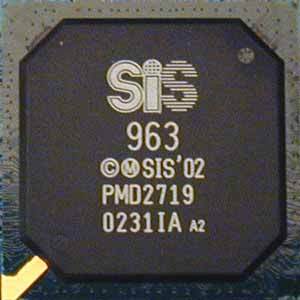The Economical Way to a Pentium 4 System: Five Motherboards with the SiS648 Chipset
HyperThreading: Which Boards To Use?
This forces the question: which motherboards can be used with a Pentium 4 with HyperThreading (HT for short)?
Technically speaking, only slight modifications to the chipset and an updated BIOS are needed. However, the result is that HyperThreading only works with the most current motherboards . In concrete terms, this means that no chipset older than 845E will work at all with HyperThreading (845, 845D). 845G and E are foolproof, but these chipsets only have a stepping of 2. You will have no difficulties whatsoever with boards based on 845PE and 845GE, because they are relatively recent enough that they already support the new functionality of the Pentium 4. Running it with all 850E chipsets should also be free of any difficulties.
More difficult is the HT support offered by other chipset manufacturers. While SiS will make up for this by implementing this functionality for the SiS648 in late December, there has been no word of this from VIA yet.
If you are still having any doubts, then take note that "with HyperThreading" is printed in the manual of each motherboard, so in the long run, this feature might gain in significance after all.
None of the motherboards presented here support HyperThreading yet. In practice, however, this should not matter much, because for now this feature will only target the high-end user (only Pentium 4 with 3.06 GHz supports HT). In this context, a board with an 850E chipset and PC1066-RDRAM would be a better choice.
By contrast, the SiS648, with its allegiance to the price- and performance-conscious user, can be considered an attractive and inexpensive alternative to the Intel chipsets.
SiS In The Battle For Market Share
The Southbridge of the SiS648 is the SiS963. It also has the UltraATA/ 133 and USB 2.0.
Get Tom's Hardware's best news and in-depth reviews, straight to your inbox.
Because of the dispute between Intel and VIA, many motherboard manufacturers are being very cautious: chipsets with the problematic P4X chipsets are not even being purchased. There is speculation now over whether this will create a gap that SiS can fill - or not.
Although Intel is most likely able to cover the demand with mostly its own range of products (without it, market shares of the P4X chipset family are not very large), the "market" does not consist solely of chipsets for Intel's Pentium 4 processors - there are also chipsets that meet the demand for AMD's Athlon. Naturally, Intel is not active in the latter segment, but nevertheless, SiS must take a back seat to VIA, its main rival who has been dominant here for several years.
SiS products have always been attractive because of their competitive pricing. The chipsets for both socket 478 and socket A are cheaper to get than comparable VIA or even Intel models. In the past few months, SiS also managed to distinguish itself in that the performance of its current products has been getting consistently high ratings.
Current page: HyperThreading: Which Boards To Use?
Prev Page Intel: Full Steam Ahead! Next Page DDR333: Only With Two!
Patrick Schmid was the editor-in-chief for Tom's Hardware from 2005 to 2006. He wrote numerous articles on a wide range of hardware topics, including storage, CPUs, and system builds.
